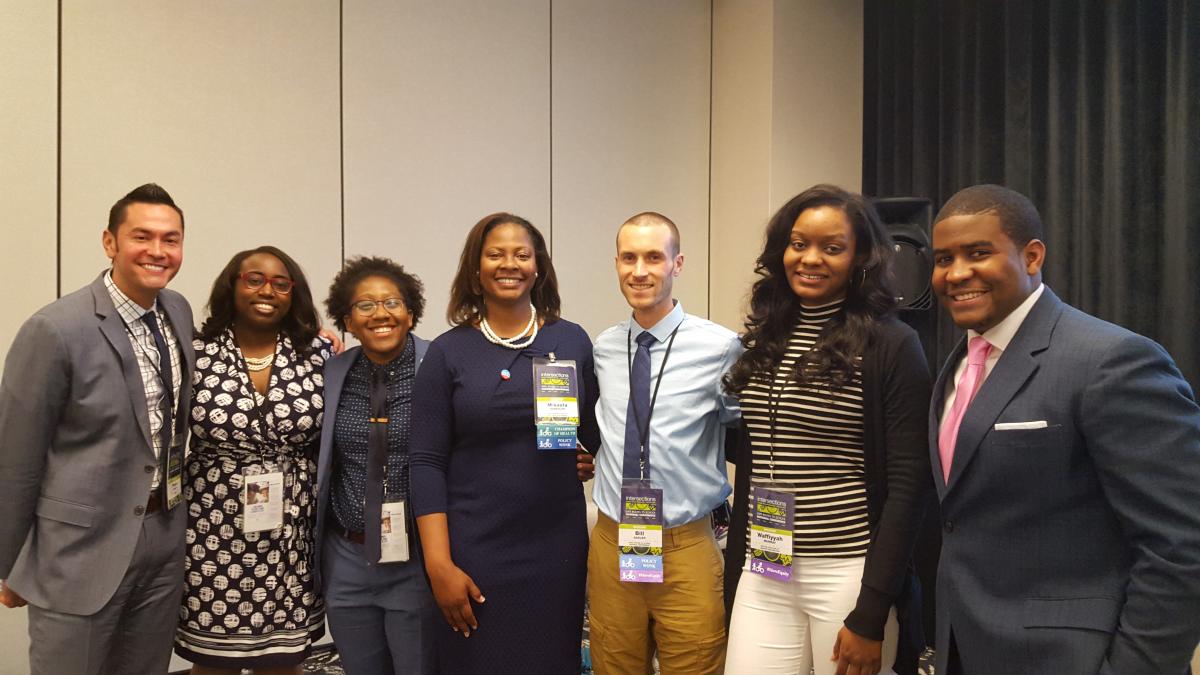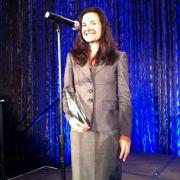
"Deb was so firmly committed to creating a better future for our children, and she will be missed." -- United States Surgeon General Dr. Vivek Murthy, in a tribute to Deb Hubsmith at the 2015 Walking Summit in Washington DC.
This study measures the impact of a walking school bus program on active transportation in an urban, low-income elementary school.

"Deb was so firmly committed to creating a better future for our children, and she will be missed." -- United States Surgeon General Dr. Vivek Murthy, in a tribute to Deb Hubsmith at the 2015 Walking Summit in Washington DC.
This document provides information about the methodology and a user guide for WHO's tool for economic assessment of the health effects of walking and cycling.
This guest blog post was written by Nancy Pullen Seufert, Director of the National Center for Safe Routes to School.
This blog post was co-written by Safe Routes Partnership staff Keith Benjamin, community partnerships manager, and Mikaela Randolph, community engagement and evaluation manager.
 "Sometimes we have to tokenize ourselves for the sake of pushing the movement forward."
"Sometimes we have to tokenize ourselves for the sake of pushing the movement forward."
This 2013 Institute of Medicine report is based on work by a committee of experts assembled at the request of the Robert Woods Johnson Foundation due to the disturbing trends of increased sedentary lifestyles and decreased health metrics among US children and youth.
Inspiring. Enthusiastic. Partnerships. Youth Leadership. Social Justice. Creating a Positive Future. Those are a few words I’d use to describe the mood, energy and intention of the 3rd Safe Routes to School National Conference in Minneapolis.
As the more than 600 participants entered the Minneapolis Convention Center on August 17, the second day of the conference, the room was buzzing with people talking about workshops and connections they made the day before.
 Partnerships…
Partnerships…
…a good thing to be writing about on Valentine’s Day. I guess you could say I am the Safe Routes Partnership’s resident matchmaker. While I can boast of several marriage outcomes from my partnership recommendations over the years, my role here at the Safe Routes Partnership has yet to involve dating suggestions.
 True or False: Physically active children perform better academically than their less active counterparts. TRUE! But you don’t have to take my word for it.
True or False: Physically active children perform better academically than their less active counterparts. TRUE! But you don’t have to take my word for it.
 As someone who has been involved with Safe Routes to School for over nine years, it has been very satisfying – let alone exciting – to see the Safe Routes Partnership’s state network project not only thrive, but continue to get generously funded. And being personally involved has only made it that much sweeter. Prior to joining the staff in May 2011, I served on the Safe Routes Partnership’s
As someone who has been involved with Safe Routes to School for over nine years, it has been very satisfying – let alone exciting – to see the Safe Routes Partnership’s state network project not only thrive, but continue to get generously funded. And being personally involved has only made it that much sweeter. Prior to joining the staff in May 2011, I served on the Safe Routes Partnership’s
 This morning, in the darkness of dawn, I snuck out to the foothills of Denver for a little inspiration/perspiration on a mountain bike ride with two of my trusted compadres.
This morning, in the darkness of dawn, I snuck out to the foothills of Denver for a little inspiration/perspiration on a mountain bike ride with two of my trusted compadres.
 Hi, welcome to my blog.
Hi, welcome to my blog.
 Press Releases:
Press Releases:

The Massachusetts Safe Routes to School program has expanded rapidly over the past year and is poised to surpass the 500 partner mark by the end of 2012. Currently, 485+ schools are participating in the program, serving 42 percent of communities throughout the Commonwealth, impacting more than 220,000 children annually.
Wednesday, September 18, 2024 at 1 p.m. ET
Join us to learn about the fifth edition of Safe Routes Partnership’s state report cards and report, Making Strides: 2024 State Report Cards on Support for Walking, Bicycling, and Active Kids and Communities.
This report marks nearly a decade of work reviewing and scoring best practices in policy, funding and practices that support walking, biking, and active communities. We are excited to share the milestones and case studies that mark real progress during that time. During this webinar we will walk you through the scoring and indicators, the changes we have seen since our last state report cards in 2022, and how you can use this information to make change.
SPEAKERS:
 Some neighborhoods are more equipped to support active lifestyles than others.
Some neighborhoods are more equipped to support active lifestyles than others.
Parks play a role in supporting public health, from mitigating the impacts of climate change to reducing depression and anxiety. A 2022 systematic review by the Community Preventative Services Task Force – part of the U.S. Department of Health and Human Services and supported by the Centers for Disease Control – emphasized the importance of Safe Routes to Parks for maximizing the health benefits of parks, greenways, and trails. The findings, published in what is called the Community Guide, showed that rates of physical activity improved significantly only when parks were combined with at least one of four key strategies to facilitate their access and usage: community engagement, public awareness, structured programming, and access enhancements. So, why does this matter? It reinforces that Safe Routes to Parks is a research-backed strategy for improving health outcomes. For more information on this research and related strategies, check out: Actionable Public Health Strategies to Boost Community Well-Being with Safe Routes to Parks.
 Those of us who have been in the field of bicycle and pedestrian advocacy for a while are quite familiar with the growing body of research connecting health to the built environment.
Those of us who have been in the field of bicycle and pedestrian advocacy for a while are quite familiar with the growing body of research connecting health to the built environment.